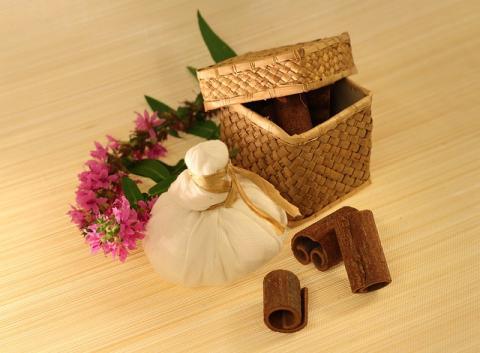
While much of the Western World is acquainted with the Ancient practice of Yoga, few know of its deep connection to Ayurveda, the science of life. Rooted in the laws of nature, Ayurveda is the healing branch of yoga and the 5000-year-old medicine of holistic being. The science of Ayurveda draws wisdom from the elements of Earth, Water, Fire, Air and Ether. Believe it or not, the qualities of these elements appear in a yoga practice. Each asana pose carries an energetic remedy. Understanding how to use the elements in your asana yoga practice will help you bring balance and harmony within.
First, let’s understand Ayurveda…
Each person comes into this life as a unique mixture of constitutional elements – Earth, Water, Fire, Air and Ether. These elements comprise what is referred to as the three Doshas: Vata (Air and Ether), Pitta (Fire and Water) and Kapha (Water and Earth). Every person is born with a natural constitution known as his or her Prakriti. Your Prakriti is a composition of these three doshas, usually with one or two being the dominant. Throughout the ebb and flow of life, we experience both physical and emotional events that affect the natural balance of the doshas. Often after such experiences, we are left feeling stressed, disconnected, and depleted with low Ojas, our immune boosting life force. Ayurveda empowers the individual to identify the doshas that are vitiated or out of balance, and helps to define a road map back to one’s natural state of being. Through this self-healing medicine, we are able to examine our lifestyles and daily routines integrating an array of practices that bring emotional, physical and mental harmony back into our lives. Yoga is one of these practices that, with the insight of Ayurveda, can help bring balance.
How do Ayurveda & Yoga play together?
In classical yoga, we have come to understand that moving through a sequence of asana poses and prayama breathing exercises can help direct the flow of energy in the body. These practices help release blockages that may be the cause of physical and emotional turbulence.
Each asana has specific elemental qualities that move the Prana life force through the Nadi channels and Chakra energy centers of the body. Some poses are uplifting and ascending, while others are grounding and descending. Some build heat, while others cool. A teacher may guide you to Utkatasana Chair Pose and suddenly you notice fire and heat building in the body. A few breaths later you may find yourself in Child’s pose, soaking in nourishment of the Earth, feeling grounded and supported. Perhaps you are balancing in Dancer’s Pose and soon notice the energy directing upward as you lift your leg higher, opening your heart and elevating the Air and Ether in the body. In fact, even choosing where you set your drishti gaze can affect the elements within. Focusing a drishti towards the Earth will yield more grounding and stability while moving your drishti towards the sky will inspire the mobility and spaciousness of Air and Ether. Each pose lends itself to a digestive fire within the body that facilitates the flow of energy, allowing you to ultimately find balance and healing.
A Yoga Sequence for Healing
We now understand that Ayurveda helps us balance our doshas and align with our natural constitution. We also know that yoga asanas contain qualities that help direct the flow of energy and elevate specific elements in our bodies. Here is where the magic begins…
Once you determine your imbalance, you can create a yoga sequence that will pacify your vitiated dosha. Your sequence can increase specific elements and qualities in the body that will instill peace. It is when you combine the knowledge of Ayurveda with the practices of yoga together, that one can use the two as a therapy and healing modality to bring harmony to the body, mind and soul.
One of the most common imbalances that people experience is that of Vata. This is because Vata – being associated with movement – is usually the first dosha to be affected. In our fast-paced, ever-changing society it is easy to find constantly ourselves on the go. There comes a point when this constant movement becomes too much, and we find that we’re triggered into stress and depletion. When this happens, we can heal ourselves with a yoga practice that brings us back down to Earth, metaphorically and energetically. We can use asanas that elevate water and earth elements in the body. These are poses that are close to the ground, tonifying, supportive – poses that direct the energy towards our feet. This can be challenging for many people – because the law of nature suggests that we are inclined to keep moving at the current pace. Think here of Newton’s first law – an object in motion will stay in motion, an object in rest will stay at rest. If you are constantly moving, your inclination will be to travel through a yoga sequence that is intense and ever-changing. The challenge comes when you recognize that you will actually benefit from slowing down, shifting gears and adapting to a slower practice. A similar challenge can be said for someone experiencing a Kapha imbalance. These folks tend to feel sluggish, inert, essentially glued to the couch. The prospect of mobilizing seems far-fetched. But when they arrive at the mat and flow through a purifying sequence, one that invites movement, perhaps incorporates inversions and creates uplifting energy in the body, that person inevitably feels much better and balanced. This is the magic of Ayurveda and Yoga.
To learn more about your natural constitution, perhaps consult an Ayurvedic Counselor who can better help you understand your Prakriti. If you are seeking guidance on how to develop a Yoga sequence to best pacify your unique imbalance, you can meet with an Ayurvedic Yoga Therapist who can advise, educate and teach you the best practices for your imbalance.








